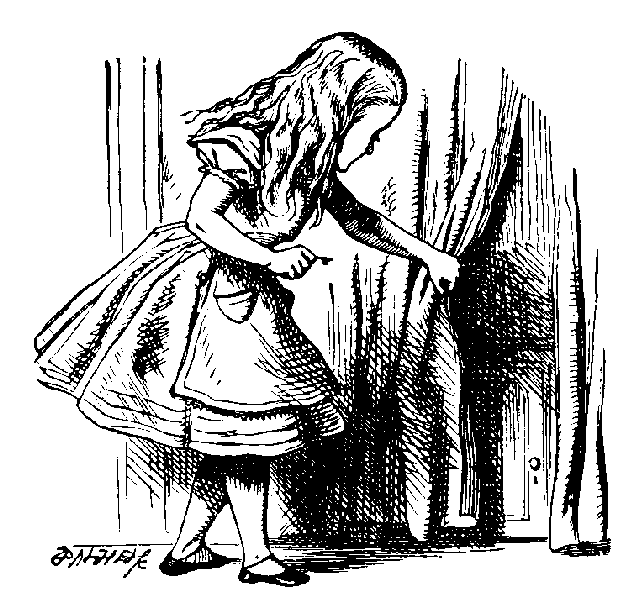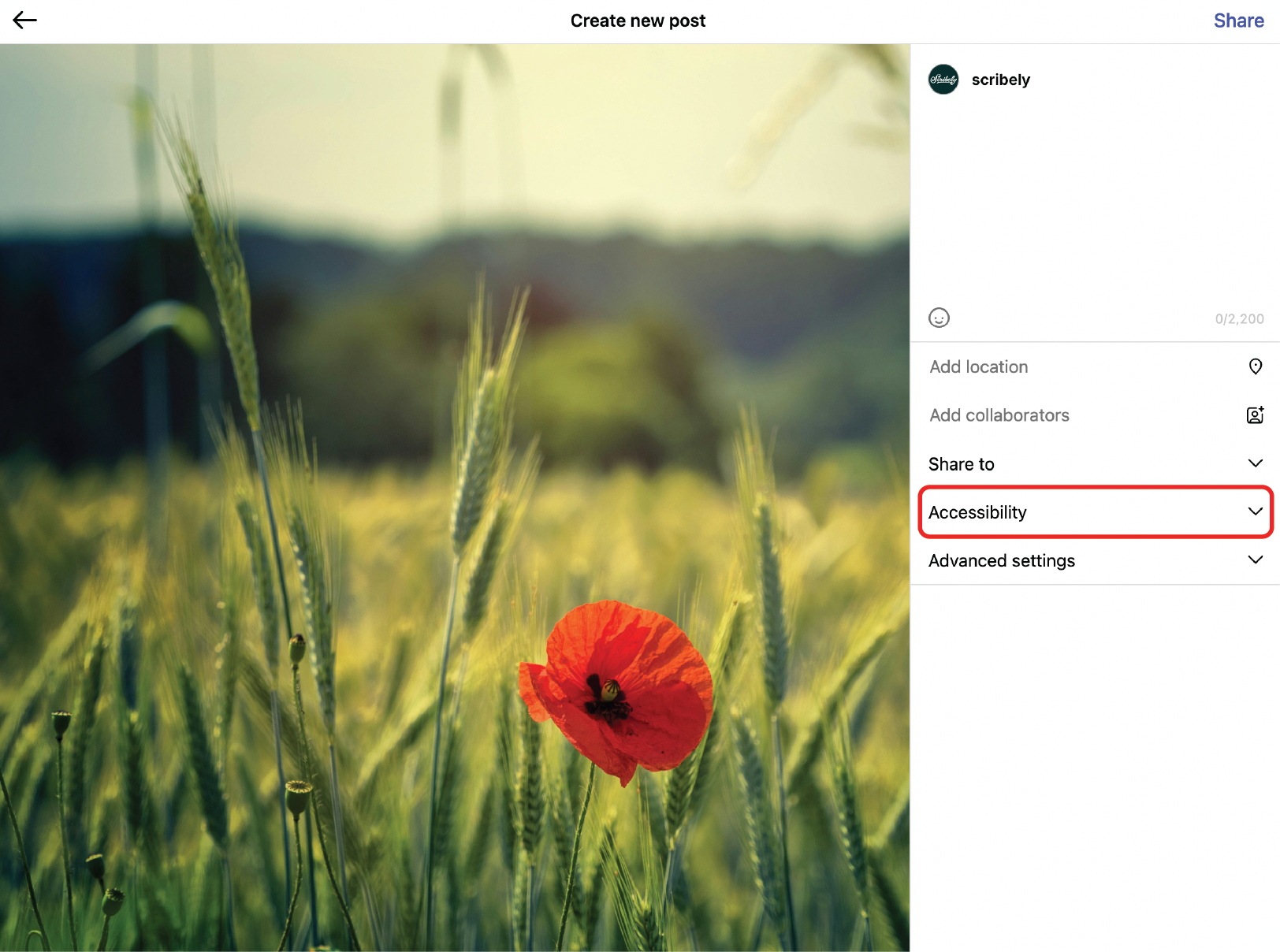Introduction
We looked at a variety of factors when rating each platform, listed below. Based on how well they met each criteria, we then gave them an overall score out of 11, with 11 being fully accessible and going beyond compliance for content and 1 being not accessible at all/meeting no content accessibility requirements.
Social Media Accessibility Series
Part 1: How Does Each Platform Measure Up?
Part 2: How to Make Your Social Media Content Accessible
Part 3: How to Make Your Social Media Videos Accessible (Step-by-Step Guide)
Part 4: Is Social Media Accessible? Three Disabled Users Share Their Experiences
Part 5: Video Accessibility on YouTube and Vimeo
How Does Each Platform Measure Up?
Social media is only becoming more integral to how we socialize and work today. So, are the major platforms ensuring that their spaces are inclusive and accessible to everyone? (Hint: You might be surprised by the answer.)
Introduction
It’s been 22—yes, 22—years since MySpace launched in 2003 and started the social media revolution. In those two decades, we’ve seen the rise and fall of many social media platforms (RIP Vine), as well as the transition of social networks from a place to poke your friends to a one-stop shop for everything from news to shopping to education to—oh yeah—the occasional post from loved ones.
As much as we already loved social media, the COVID-19 pandemic only increased our dependence on it, with average time spent using it daily coming in at 2 hours and 29 minutes, an increase of 3.5% over 2021. No matter how we feel about it, social media is a large part of how we communicate, learn, and interact.
Yet up to 15% of the world’s population is still being left out of the conversation because platforms have been slow to meet web accessibility requirements set by Web Content Accessibility Guidelines (WCAG) that would make their spaces equitable for all users. (Never heard of web accessibility before? We got you! Check out Scribely’s Alt Text Masterclass article for an explanation.) This means that people with visual, auditory, and cognitive disabilities often meet barriers that make social media sites either unusable or extremely difficult to use.
But it’s 2025, and it shouldn’t be this way. It’s well known that these companies have incredible human and technological resources at their disposal, so it seems to be more a matter of not prioritizing accessibility than it is a matter of ability.
Thus, we decided to rate the major platforms’ commitment to lowering barriers by creating inclusive, equitable, and accessible spaces. Be forewarned! Though progress has been made in the last few years, we still have a long way to go.
How We Rated Each Platform’s Accessibility
We looked at a variety of factors when rating each platform, listed below. Based on how well they met each criterion, we then gave them an overall score out of 11, with 11 being fully accessible and going beyond compliance for content and 1 being not accessible at all/meeting no content accessibility requirements.
Scoring Criteria
Encourages Properly Formatted Hashtags
Hashtags in Pascal Case or Camel case can be read properly by screen readers and helps those with information-processing disorders to better decipher hashtags. #ThisIsPascalCase and #thisIsCamelCase. A compound hashtag in all lowercase #likethis isn’t accessible. Platforms should have a prompt encouraging users to properly format their hashtags or already have suggested hashtags properly formatted.
Has an Alt Text Field
Without alt text, images are inaccessible to blind and visually impaired users. (Haven’t heard of alt text? Check out our explainer.)
Makes Alt Text Visible to Everyone
When alt text is hidden behind code for only screen readers to access, it’s easy to forget about it. If a platform makes it obvious, it helps people remember to add it.
Has Auto-Captions
Captions help make videos accessible to Deaf/hard-of-hearing folks, so it’s important that it’s standard on platforms that have video.
Allows Human-Generated Captions
Auto-captions aren’t always correct, so people need to be able to edit them and/or upload their own captions.
Supports Transcripts, Both Auto and Human-Generated, for Videos
Transcripts make videos accessible to those who don’t/can’t use captions or screen readers.
Has Audio Description for Videos
Audio descriptions allow blind and visually impaired users to understand what’s happening in a video beyond just what’s being said.
Prioritizes Human-Generated Over AI
Despite how much platforms are investing in and touting the benefits of AI, the technology is not even close to ready for accessibility.
Ease of Use of Each Accessibility Function
How many clicks does it take to access each feature? The more clicks, the fewer people will actually use them, so if they’re hard to find, platforms are creating a barrier for users.
Has an Accessibility Statement and Invites Feedback
If platforms don’t have a statement about how they’re prioritizing accessibility requirements, big red flag!
Provides Guidance for Accessibility Functions on Accessibility Support Pages
Platforms must ensure that everyday users can find and utilize every function. Barriers to using accessibility features need to be minimal to encourage wider adoption.
Note: This is not intended to be an exhaustive list of accessibility measures, but rather a starting place for evaluating social media platform accessibility. Several other measures, like color contrast and turning off video auto-play, are also important.
Bluesky
Overall Score: 7 out of 11
Highlights: Like X/Twitter and Threads, Bluesky has a visible alt text badge to make image descriptions visible to all users. The platform also has a setting that when turned on, requires users to write alt text before they can publish their post.
Improvements: No support for audio descriptions or transcripts. Does not have captioning capabilities through auto-captions or uploading an SRT file. Written video description field is mislabeled as alt text.
Breakdown:
- Encourages Properly Formatted Hashtags: No.
- Has Alt Text: Yes, for both still images and GIFs.
- Makes Alt Text Visible to Everyone: Yes.
- Has Auto-Captioning: No.
- Allows Human-Generated Video Captions: No.
- Supports Transcripts, Both Auto and Human-Generated, for Videos: No.
- Has Audio Description Capabilities: No, but users can write a written description of their videos by click the alt text button under the uploaded media. This can be misleading since alt text is technically only for image files, not video or audio files. However, it’s been reported by many people that their assistive devices cannot properly access the video description assigned to media on the platform, so this feature should not be used for videos yet.
- Prioritizes Human-Generated Over AI: No.
- Ease of Use of Each Accessibility Function: High. Accessibility features and settings are easily found on desktop and in the app.
- Has an Accessibility Statement and Invites Feedback: No.
- Provides Guidance for Accessibility Functions on Accessibility Support Pages: No.
Other notable accessibility functions: Supports dark mode. Users can also adjust the font size on the platform, disable haptic feedback in the app, and choose to display larger alt text badges, if preferred.
Threads
Overall Score: 7 out of 11
Highlights: Like X/Twitter, Threads has a visible alt text badge to make image descriptions visible to all users. The platform also allows users to describe the visuals details of videos.
Improvements: No support for audio descriptions or transcripts. Does not have captioning capabilities through auto-captions or uploading an SRT file. Alt text badge isn’t visible on desktop. Written video description field is mislabeled as alt text.
Breakdown:
- Encourages Properly Formatted Hashtags: N/A. Threads doesn’t use hashtags in the traditional sense.
- Has Alt Text: Yes, for both still images and GIFs.
- Makes Alt Text Visible to Everyone: Yes, but only on the mobile app. The feature must also be turned on if a user wants to see the badge.
- Has Auto-Captioning: No.
- Allows Human-Generated Video Captions: No.
- Supports Transcripts, Both Auto and Human-Generated, for Videos: No.
- Has Audio Description Capabilities: No, but users can write a written description of their videos by click the alt text button under the uploaded media. This can be misleading since alt text is technically only for image files, not video or audio files.
- Prioritizes Human-Generated Over AI: Yes and no. They rely on AI to auto-generate alt text when a user has not written their own.
- Ease of Use of Each Accessibility Function: Medium-high. As mentioned, the alt text badge is visible on every image, but only in the mobile app and only if a user has opted to turn the feature on.
- Has an Accessibility Statement and Invites Feedback: No.
- Provides Guidance for Accessibility Functions on Accessibility Support Pages: No.
Other notable accessibility functions: Supports dark mode on desktop and mobile.
X/Twitter
Overall Score: 7 out of 11
Highlights: X/Twitter was the first social media platform to introduce a visible alt text badge.
Improvements: Still lacks support for audio descriptions or transcripts. Does not have captioning for live streaming.
Breakdown:
- Encourages Properly Formatted Hashtags: Yes and no. All hashtags on the Trending page are properly formatted, but there’s no prompt when composing a post with hashtags.
- Has Alt Text: Yes, for both still images and GIFs. The platform even has an “” if users don’t want to forget to write alt text for their posts before publishing them.
- Makes Alt Text Visible to Everyone: The first platform to do so via a visible alt text badge. However, the alt text badge does not show up on posts in the mobile app when a user is scrolling through the main feed or on a specific profile. A single post will need to be selected to see if it has an alt text badge or not.
- Has Auto-Captioning: Yes.
- Allows Human-Generated Video Captions: Yes, users can upload SRT caption files from the web, but not in the mobile app. Check out .
- Supports Transcripts, Both Auto and Human-Generated, for Videos: No.
- Has Audio Description Capabilities: No.
- Prioritizes Human-Generated Over AI: Yes and no. They rely on AI to generate auto-captions, but they do not use AI to generate alt text.
- Ease of Use of Each Accessibility Function: Medium-high. As mentioned, the visible alt text badge is visible on every image, but the image description reminder is pretty buried in settings.
- Has an Accessibility Statement and Invites Feedback: Yes: X/Twitter’s Accessibility Statement.
- Provides Guidance for Accessibility Functions on Accessibility Support Pages: Yes, including a helpful X/Twitter page on how to write great image descriptions.
Other notable accessibility functions: Users can also reduce motion/animation, prevent video autoplay, change screen contrast, and turn off sounds. In addition, they’ve improved the experience for screen reader users with details like pronouncing # as “hashtag” and reading shortened URLs.
Overall Score: 6 out of 11
Highlights: Has adopted WCAG 2.1 Level AA in the design and development of their platform.
Improvements: Carousel posts should also allow for alt text descriptions. Needs to have a caption function. Can’t add alt text to images in comments.
Breakdown:
- Encourages Properly Formatted Hashtags: No.
- Has Alt Text: Yes. The option to add alt text is visible directly under an uploaded image, instead of being hidden under “advanced” options.
- Makes Alt Text Visible to Everyone: No.
- Has Auto-Captioning: Yes.
- Allows Human-Generated Video Captions: Yes, through an SRT file (LinkedIn Caption Support) or by editing the auto-captions generated by the platform.
- Supports Transcripts, Both Auto and Human-Generated, for Videos: No, but they do provide transcripts for most of their LinkedIn Learning videos.
- Has Audio Description Capabilities: No. Users either need to add it to their videos before uploading to LinkedIn, or create a second version of the video, host it elsewhere, and link to it.
- Prioritizes Human-Generated Over AI: Yes, does not generate alt text or captions.
- Ease of Use of Each Accessibility Function: Medium.
- Has an Accessibility Statement and Invites Feedback: Yes, read LinkedIn’s Accessibility Statement.
- Provides Guidance for Accessibility Functions on Accessibility Support Pages: Yes, but it’s not in its own category on their support page. You have to search “accessibility” to find related articles.
Other notable accessibility functions: They have a Disability Answer Desk, and they partner with Be My Eyes to provide assistance to blind and low-vision users via a live video call. LinkedIn is also one of the few platforms that has hidden buttons for “Skip to Main Content,” “Skip to Search,” and “Keyboard Shortcuts” for people who use their keyboard to navigate webpages.
TikTok
Overall Score: 6 out of 11
Highlights: In many ways, TikTok has been more willing to meet accessibility requirements than other platforms, which has then forced other platforms (ahem, Instagram) to follow suit.
Improvements: It’s not immediately apparent if captions are available for live videos. Also, they could make functions (like captions) more customizable.
Breakdown:
- Encourages Properly Formatted Hashtags: No.
- Has Alt Text: Yes, but only through the mobile app. Static images cannot be uploaded via desktop, so alt text also isn’t available on desktop for that reason.
- Makes Alt Text Visible to Everyone: No.
- Has Auto-Captioning: Yes, since April 2021 (TikTok Introduces Auto-Captions).
- Allows Human-Generated Video Captions: Yes.
- Supports Transcripts, Both Auto and Human-Generated, for Videos: No. Transcripts are not available on this platform.
- Has Audio Description Capabilities: Yes, called “Voiceover.” When creating a video, use the Voiceover tool to record descriptions.
- Prioritizes Human-Generated Over AI: No. By default, TikTok generates auto-captions instead of encouraging users to create their own.
- Ease of Use of Each Accessibility Function: Easy.
- Has an Accessibility Statement and Invites Feedback: Yes. The statement also lists all its current accessibility features: .
- Provides Guidance for Accessibility Functions on Accessibility Support Pages: Yes.
Other notable accessibility functions: Has a couple options for those with photosensitivity or epilepsy, as well as the ability to turn off animated video thumbnails. TikTok also has a dark mode and allows users to adjust text size.
Overall Score: 4 out of 11
Highlights: Has alt text and captions. Users can also upload transcripts and audio descriptions for their videos through the Facebook mobile app.
Improvements: Needs to work with disabled communities and groups to improve their platform in meaningful ways. Stories aren’t accessible to screen readers.
Breakdown:
- Encourages Properly Formatted Hashtags: No.
- Has Alt Text: Yes and no. Yes, for regular posts (though it takes multiple clicks on each platform to get to the place to input your description) and no for ads. If you run ads through Meta, make sure your caption explains the image, or you’ll miss out.
- Makes Alt Text Visible to Everyone: No.
- Has Auto-Captioning: Yes.
- Allows Human-Generated Video Captions: Yes. It allows you to edit auto-generated captions or you can upload your own SRT file.
- Supports Transcripts, Both Auto and Human-Generated, for Videos: Yes and no. Facebook only allows for transcripts to be uploaded with regular videos and Reels, and this can only be done through the mobile app. Transcripts cannot be uploaded on desktop.
- Has Audio Description Capabilities: Yes and no. Facebook only allows for an audio description to be uploaded with regular videos and Reels, and this can only be done through the mobile app. Audio descriptions cannot be uploaded on desktop. Users can also use the platform’s “Voiceover” feature when creating their videos.
- Prioritizes Human-Generated Over AI: No, uses AI for captions and alt text on images without user-generated alt text.
- Ease of Use of Each Accessibility Function: Low. Many of the accessibility functions are hidden behind several clicks or not available on all devices.
- Has an Accessibility Statement and Invites Feedback: Yes. The statement also lists most of its current accessibility features: Facebook Accessibility Statement.
- Provides Guidance for Accessibility Functions on Accessibility Support Pages: Yes.
Other notable accessibility functions: None.
Overall Score: 4 out of 11
Highlights: Has alt text and captions.
Improvements: Needs an accessibility statement and to work with disabled communities and groups to improve their platform in meaningful ways. Stories aren’t accessible to screen readers.
Breakdown:
- Encourages Properly Formatted Hashtags: No.
- Has Alt Text: Yes and no. Yes, for regular posts (though it takes multiple clicks to get to the place to input your description) and no for ads. If you run ads through Meta, make sure your caption explains the image or you’ll miss out.
- Makes Alt Text Visible to Everyone: No.
- Has Auto-Captioning: Yes. Added via a sticker for stories. Captions can also be added to Reels during the standard video creation process.
- Allows Human-Generated Video Captions: Sort of. It allows you to edit auto-captions, but you can’t upload your own SRT file.
- Supports Transcripts, Both Auto and Human-Generated, for Videos: No.
- Has Audio Description Capabilities: Yes, but only through the “Voiceover” feature.
- Prioritizes Human-Generated Over AI: No, uses AI for auto-captions and alt text on images without user-generated alt text.
- Ease of Use of Each Accessibility Function: Low. In addition to hiding functions behind several clicks, they also make it hard for other platforms (e.g. social media schedulers) to utilize those functions.
- Has an Accessibility Statement and Invites Feedback: Yes, but it’s minimal: Instagram Accessibility Statement.
- Provides Guidance for Accessibility Functions on Accessibility Support Pages: Yes, but very little.
Other notable accessibility functions: None.
Snapchat
Overall Score: 1 out of 11
Highlights: Does allow users to create captions.
Improvements: Almost everything. Snapchat is the least accessible platform we reviewed.
Breakdown:
- Encourages Properly Formatted Hashtags: No.
- Has Alt Text: No.
- Makes Alt Text Visible to Everyone: No.
- Has Auto-Captioning: Yes. (Captions on Snapchat)
- Allows Human-Generated Video Captions: Yes, but you can only edit the auto-captions. There is no option if upload an SRT file.
- Supports Transcripts, Both Auto and Human-Generated, for Videos: No.
- Has Audio Description Capabilities: No.
- Prioritizes Human-Generated Over AI: No.
- Ease of Use of Each Accessibility Function: Medium. The captions function is not immediately obviously.
- Has an Accessibility Statement and Invites Feedback: No statement was readily discovered on their website or via Google search. When we searched their “newsroom” for announcements about new accessibility features, we got zilch.
- Provides Guidance for Using Each Accessibility Function on Accessibility Support Pages: Very minimal. There are only four entries for Snapchat accessibility settings.

Other notable accessibility functions: Released the Snapchat lens in April 2022 that teaches American Sign Language, which was created by Deaf employees who call themselves the “Deafengers.”
Conclusion
In case it isn’t yet apparent, platforms building accessibility functions into their platforms is way easier and causes higher adoption rates than users finding ways to make their content more accessible. The bottom line is that users should not have to invent clever workarounds to make their content accessible to all people. Platforms should make it simple, easy, and obvious, yet we’re still a long way from that. Accessibility is not only the right thing to do, but it’s also good business.
BONUS: Which social media scheduler is the most accessible?
Despite the abundance of social media scheduling software, we analyzed 20 platforms using the same checklist we use when deciding on any new software to use at Scribely. Do they allow adding alt text to images and captions to videos? Do they have an accessibility statement? Are there help articles related to accessibility functions?
Unfortunately, there’s no clear winner right now. Most third-party sites and tools vary greatly when it comes to accessibility. Some have access to platform alt text fields, some do not. Some allow for SRT file upload, some do not.
If individuals and social media professionals want to make their content accessible, there aren’t many solutions available. If you’re already using one or looking to use a social media management tool, now’s a great time to contact your favorite one requesting these features!
- HeyOrca
- Sked
- Sprout Social
- AgoraPulse
- Hootsuite
- Buffer
- Loomly
- Later
- SocialPilot
- Sendible
- Social Bee
- Coschedule
- MavSocial
- Edgar
- eClincher
- StatusBrew
- NapoleonCat
- PostPlanner
- Planable
- Brandwatch
Check out Part 2 of this Social Media Accessibility series.

Check out Scribely's 2024 eCommerce Report
Gain valuable insights into the state of accessibility for online shoppers and discover untapped potential for your business.
Read the ReportCite this Post
If you found this guide helpful, feel free to share it with your team or link back to this page to help others understand the importance of website accessibility.












.jpg)





.jpg)


























_edited_6x4-p-1080.jpeg)


